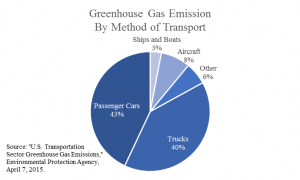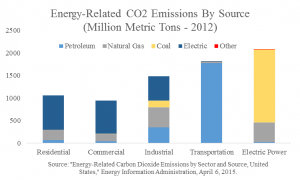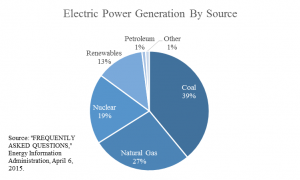American Energy Renaissance Act — Why Oil and Gas Matter
The American Energy Renaissance Act of 2014 — a bill proposed by Senator and now presidential candidate, Ted Cruz — proposes many drastic changes to the status quo surrounding energy and environmental regulations, some of which include:
- Giving only states the right to regulate hydraulic fracturing
- Preventing the Environmental Protection Agency (EPA) from regulating carbon dioxide (CO2), methane, water vapor and nitrous oxide emissions
- Repealing regulations on crude oil exports
Passage of the bill would be lauded by energy proponents, and while as a whole it would be no victory for traditional environmentalists, one of its provisions stands out, as it seeks to phase out engine-damaging ethanol fuel and create a higher standard for fuel economy. One can only truly understand the magnitude of improving fuel economy across the board by first looking at CO2 emissions by source:
Transportation, which is second only to the electric power sector in terms of carbon dioxide emissions, could see significant long-term reduction in emissions while creating a surplus in disposable income for Americans and business owners. Notably, passage of the bill does not imply that American oil companies would be at a significant disadvantage due to the simple fact that it would open a whole new niche for American crude in the international economy.
Also striking is coal’s share of carbon dioxide emissions in the electric power industry — for coal’s actual share in energy generation as seen below, it seems almost unwarranted:
Natural gas, while still not yet as widespread as coal, is very cost competitive, with liquid natural gas (LNG) at less than $10 per British thermal unit (Btu) while normal gas flirts with numbers around and below $5. Furthermore, if natural gas cannibalized market share from the coal sector — as is likely given the amount of continuing regulations on coal — it would help both the economy and the environment. Indeed, the Energy Information Administration asserts that for every million Btu generated, coal can release between 214 and 228 pounds of CO2 while natural gas creates almost half at 117 pounds per million Btu. While opponents of natural gas could cite its past price volatility, the past 5 years have been quite stable and the fracking boom is no reason to believe that the energy will be subject to much variance, at least not besides cyclical winter-heating and summer-cooling fluctuations, which coal can also be subject to. On the contrary, the market for coal is either becoming too expensive due to relentless regulation or disappearing altogether, especially abroad in developed countries.
The consumer free market response to any good or service in production is to demand quality proportional to whatever price level that consumer is willing and able to pay. With time, more countries are joining the ranks of developed nations who — like the U.S. — are characterizing themselves as more than willing to pay premiums on energy for better environmental quality. Additionally, natural gas has a history of matching or even beating domestic coal prices in the private sector, while mounting pressure on the public sector is slowly opening the international markets for both gas and oil.


